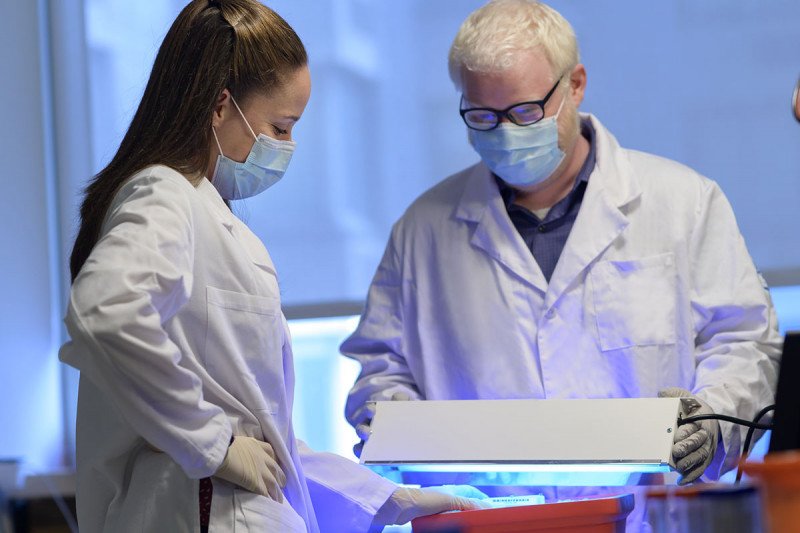Digging down to the genetic roots of leukemia
Researchers have conducted the biggest study ever into the path that individual blood cells take to becoming leukemia. Former Damon Runyon-Sohn Fellow Robert L. Bowman, PhD, Former Fellow Aaron D. Viny, MD, and colleagues at the Memorial Sloan Kettering Cancer Center examined how a series of stepwise mutations in normal blood cells could trigger the transformation to cancer. The study also shows how these mutations accumulate as the disease progresses.

Pediatric Fellow Robert L. Bowman, PhD (right)
are investigating the genetic changes in blood
cells that lead to cancers, such as leukemia.
Traditional genomic analysis of cancer relies on “bulk sequencing,” which takes a broad survey of all the mutations present across all the cells in a tumor sample. Bulk sequencing provides information about leukemia biology and prognosis. However, it cannot determine specific mutations in individual cells, how different cell populations divide and expand, or the order of new mutations occurring.
To get a more accurate picture, this study deciphered the mutations found in every single cell. The samples were obtained from 123 people who were treated for acute myeloid leukemia (AML), as well as those with two blood conditions that can lead to AML: clonal hematopoiesis and a blood cancer called myeloproliferative neoplasms (MPN). The complex analysis revealed information on early 750,000 unique blood cells. “We wanted to understand how these mutations work together to give us insight into their biological function,” explains Dr. Bowman.
The researchers determined the order in which the mutations occurred—some changes caused cells to become aggressive cancer while other cells remained healthy. They will use this data to create more accurate disease models that can then be used to develop new diagnostic methods and potentially test new drugs. “Our hope is that similar single-cell studies in solid tumors and other blood cancers will follow and that our work will provide a playbook on how to approach these studies with other kinds of cancer,” said Dr. Bowman.
This research was published in Nature.
